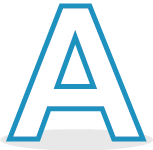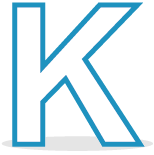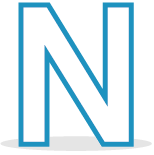Health and safety is concerned with the safety, health and welfare of people engaged in work or employment and others who might be affected by the workplace environment. Policy and guidance documents for a broad range of health &and safety topics are provided via the links below.
The Health and Safety Department have developed a number of Toolbox Talks/Notes on a range of topics. These are key safety messages that are intended to be communicated by local managers to their staff (where appropriate) and recorded on the record form provided. The Toolbox Talks/Notes can be accessed below.
A | B | C | D | E | F | G | H | I | J | K | L | M | N | O | P | Q | R | S | T | U | V | W | X | Y | Z
A

Alerts
In NHSGGC, there are a number of alerts that are distributed around the organisation by the Health and Safety department.
Medical Devices Alerts (MDA)
MDAs were introduced in England on 1 January 2003, to replace the previous types of safety warnings (Hazard Notice, Safety Notice, Device Alert, Advice Notice, Safety Notices and Pacemaker Technical Notes).
Safety Action Notices (SAN)
SANs are notices that disseminate relevant NHS England Patient Safety Alerts relating to equipment. This is to ensure that the communication is being sent to the right people and that the communication is being actioned appropriately, and does not get confused with any other Scottish initiatives.
Estates and Facilities Alerts (EFA)
EFAs started in 2010; a new format safety warning dealing with Estates and Facilities equipment, and is issued in one of two priorities: Action (standard priority) and Immediate Action (top priority).
Field Safety Notices (FSN)
FSNs are alerts received directly from equipment manufacturers.
Internal Safety Notices (ISN) and Risk Awareness Notices (RAN)
ISNs and RANs are generated from incidents that have occurred internally, and have been investigated by either the Health & Safety departments, or Risk Management department respectively.
Product Recalls (PR) and Customer Advice Notices (CAN)
PRs and CANs are alerts / recalls that have been issued from the National Procurement department of NHS Services Scotland.
The alerts can be found using the links below, they have seen split into annual pages to make them easier to find. Due to the content of some of the alerts, full details for alerts can only be seen by employees logged into the NHS Network.
Agency, Bank and Temporary Employees
There are occasions when you may require the services of an agency, bank or temporary employee. You must make them aware of any relevant health and safety arrangements within your area. Guidance is provided below and an example checklist which could be used to bring issues relative to your area to the attention of the employee at a brief induction.
Alcohol and Substance
NHSGGC is committed to providing a safe and effective working environment and to promoting the health, safety and well-being of patients, visitors and employees. The Alcohol and Substance Policy is designed to ensure that employees are aware of the risks associated with alcohol and/or substance misuse and the consequences, including the legal consequences, of their actions.
Asbestos
As Asbestos Policy and Management Plan falls within the remit of the Facilities Directorate, documentation relating to that topic is held on a different page which you can access here.
Please note, as this link is to an internal site, access will only be obtained if you are logged into an NHS networked computer.
The guidance document below explains what asbestos is, what some of the more common uses in buildings are, and how NHSGGC manages it, along with what to do if you think you have been exposed.
B

C

Contractors
Control of Substances Hazardous to Health (COSHH)
The Control Of Substances Hazardous to Health Regulations 2002 apply to a very wide range of substances and preparations mixtures of two or more substances – with the potential to cause harm if they are inhaled, ingested or come into contact with or are absorbed through the skin. These include individual chemical substances or preparations such as paints, cleaning materials, metals, pesticides, and insecticides. They can also be biological agents such as pathogens or cell cultures. Substances hazardous to health can occur in many forms, e.g. solids, liquids, vapours, gases, dusts, fibres, fumes, mist, and smoke.
The Chemical (Hazard Information and Packaging for Supply) Regulations 2002 (CHIP) was replaced by the GB CLP Regulation on 1 June 2015.Further details on CLP can be obtained by clicking here.
The Health and Safety Executive publish information on workplace exposure limits and definitions of different types of dusts, and other substances. The document is EH40/2005 Workplace exposure limits.
D

Display Screen Equipment (DSE)
E

F

Fire Safety
As Fire Safety falls within the remit of the Facilities Directorate, documentation relating to that topic is held on a different page which you can access here.
Please note, as this link is to an internal site, access will only be obtained if you are logged into an NHS networked computer.
First Aiders at Work
NHSGGC First Aider arrangements
Please note that registered medical and registered trained general nurses, midwives and health visitors can act as first aiders and therefore do not generally require to attend a first aid course.
Managers are encouraged to liaise with other services who they share locations with in order to ensure First Aid provision, particularly during periods of leave.
Nominations for first aid training should be made using the NHSGGC First Aider Nomination Form and sent to ggc.healthsafetyfirstaid@ggc.scot.nhs.uk. The nomination should be made by a budget holder authorised to pay for each place they require on a course and also, if applicable, the annual stipend.
Staff will be contacted regarding potential dates once a space on a course becomes available. On confirmation of availability to attend, course joining instructions will be provided.
For further information please refer to the First Aid Guidance Document.
G

H
I

Incident (Accident) Management
The reporting of incidents forms part of the Risk Management Strategy. The Incident (Accident) Management page is a guide for staff on how to report incidents, including near misses and potential incidents. It covers all incidents, whether they involve patients, relatives, visitors, staff, contractors, volunteers or the general public.
J

K

L

Lone Working
We define lone workers as ‘Employees whose working activities can involve periods of time during their working day where they are without any kind of close or direct supervision or in contact with other colleagues’. The links below provides information regarding lone workers.
M

Mental Health and Wellbeing
Mobiles, Radios, Routers and Computers
Mobile phone risk assessments
The assessments below have been created by Clinical Physics. They provide instruction as to whether mobile phones can or cannot be used in departments and whether further risk assessment is required.
- Gartnavel General Hospital
- Inverclyde Royal Hospital
- New Stobhill Hospital
- New Victoria Hospital
- Princess Royal Maternity Hospital
- Queen Elizabeth University Hospital
- Royal Hospital for Children
- South Glasgow Campus (excluding QEUH and Children’s Hospital)
- Vale of Leven Hospital
- West Glasgow ACH
- Dykebar Hospital
- Glasgow Royal Infirmary
- Royal Alexandria Hospital
- Orchard View
Moving and Handling
- Moving and Handling Pages
- Moving and Handling Education
- Moving and Handling Risk Assessment
- Generic Load Risk Assessment Form
- Generic People Handling Risk Assessment Form
- Person Specific Inpatient Assessment Form
- Person Specific Inpatient Intervention Plan
- Person Specific Community Risk Assessment
- Moving and Handling Equipment Register
N

New & Expectant Mothers
Noise at Work
O

Occupational Hygiene
Occupational Hygiene is the applied science concerned with the identification, measurement, appraisal and control of physical, chemical and biological factors in the workplace which may affect the health of those at work or in the community. Guidance is provided below as is the referral form for accessing the service.
P

Personal Protective Equipment (PPE)
The Personal Protective Equipment at Work Regulations 1992 (as amended) sets out duties to employers to ensure that PPE is:
- Supplied and used at work wherever there are risks to health and safety that cannot be adequately controlled in other ways
- Properly assessed before use to ensure it is suitable
- Maintained and stored properly
- Provided with instructions on how to use it safely.
Where the use of PPE has been identified as an appropriate control measure through risk assessment, then it is the duty of staff to appropriately use the PPE as provided.
The checklist is taken from the Policy, and can be used during the selection process of PPE.
Q

R

Radiation, Non-ionising Radiation and Laser Pointers
Risk Assessment
S

Security
As Security falls within the remit of the Facilities Directorate, documentation relating to that topic is held on a different page which you can access here.
Please note, as this link is to an internal site, access will only be obtained if you are logged into an NHS networked computer.
Sharps
Sharps are needles, blades (such as scalpels) and other medical instruments that are necessary for carrying out healthcare work and could cause an injury by cutting or pricking the skin.
Specimen Transport & Disposal
Stalking
Stalking is a very serious and particularly insidious crime. Unlike other crimes which are, typically ‘one-off’ events, it can persist over time (anything from weeks, to months and even years).
In line with the Criminal Justice & Licensing (Scotland) Act 2010, Police Scotland define Stalking as:
“A (stalking) offence occurs when a person engages in a course of conduct on at least two separate occasions, which causes another person to feel fear or alarm, where the accused person intended, or knew or ought to have known, that their conduct would cause fear and alarm.”
Stress in the Workplace
T

Toolbox Talks and Notes
Toolbox Talks are an integral component of how Local Managers communicate key safety messages to their staff. They can be used at handovers, staff meetings, huddles etc. They are developed in response to events that have occurred or identified hazards and will be added to overtime so you should check back to this page regularly.
The Record Form below should be used to record when your staff have had an opportunity to hear or read the contents of the relevant Health & Safety Toolbox Talk / Notes below. You should aim to present or distribute one Toolbox Talk / Note every few weeks, ensuring all are completed within a two yearly cycle.
Toolbox Talks/Notes
- Near Miss Reporting
- Reporting an Incident
- Sharps – Disposal
- Sharps – Inappropriate Disposal
- Sharps – Management of Injuries
- Slips, Trips and Falls (Non Patient)
- Prevention and Assessment of Patient Falls
- Safe Use of Bed Rails
- Skin Health
- Physical Restraint in Healthcare
Policy related Toolbox Talks/Notes
Training & Education
U

V

Violence Reduction (Health and Safety)
W

Waste Management
Winter Safety
Issues such as inclement weather may present a risk to your health and safety. It is important to stay safe and keep up-to-date with the latest information available which can be found below.
Slips, trips and falls
Slips, trips and falls incidents are a common occurrence during the winter months, further information can be found . Below are some points to help minimise the risk;
Staff are reminded to be vigilant when walking between buildings, in car parks, or whilst out in the community during winter months – report any defects to grounds / lighting to estates (NHS premises) or to the local authority (community) and make colleagues aware.
During periods of adverse weather staff should only undertake essential community visits / movements between sites.
It is also important that staff wear suitable footwear for the tasks they undertake and the prevailing the weather conditions. Additional personal protective equipment (PPE) can be worn when required, information can be found here.
Facilities management or caretaker staff will grit / maintain external areas of NHS premises. It is important to ensure each premises has a plan in place for this. Further advice for community based services / sites is available here.
A slips, trips & falls risk assessment should be in place for our community based services and premises, examples are provided – here (available only to those logged on to NHSGGC).
Driving in Winter
Driving conditions will be more of a challenge during the winter months due to low temperatures (ice /snow), rain and wet road surfaces, reduced visibility due to fog and more hours of darkness – particularly during ‘rush hour’. The following links below provide guidance on driving in winter:
If you are a manager and your staff group are expected to drive to premises (e.g. patient’s homes, other sites etc.) away from their base on a regular basis then it is your responsibility to ensure this is taken into consideration during the risk assessment process for lone working / domiciliary visits. Information, guidance and example risk assessments for our community based services and premises can be found here (available only to those logged on to NHSGGC).
It is also important to keep up-to-date with travel information and the weather forecast. The use of the radio and social media such as twitter will help with this, below are links to useful websites as well:
Further Information
- The organisation has corporate Adverse Weather Guidance in place.
- RoSPA – Winter Safety.
- For any further information or guidance please contact the Health and Safety Department.
Work Equipment – Provision and Use
Work Related Driving
Working Time Regulations
Workplace, Health, Safety & Welfare
X

Y

Young Persons
Z

